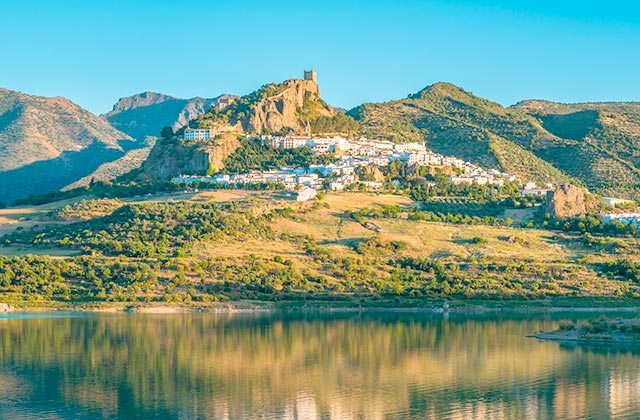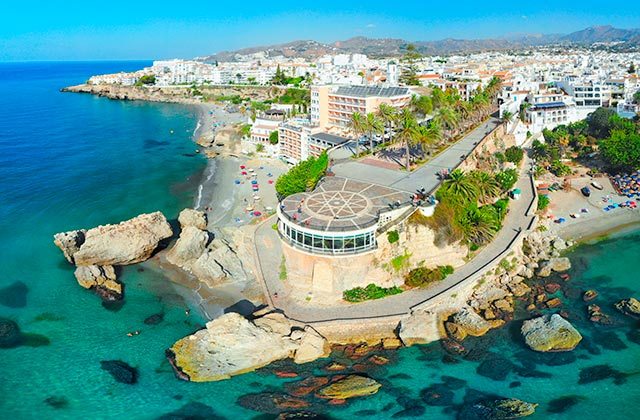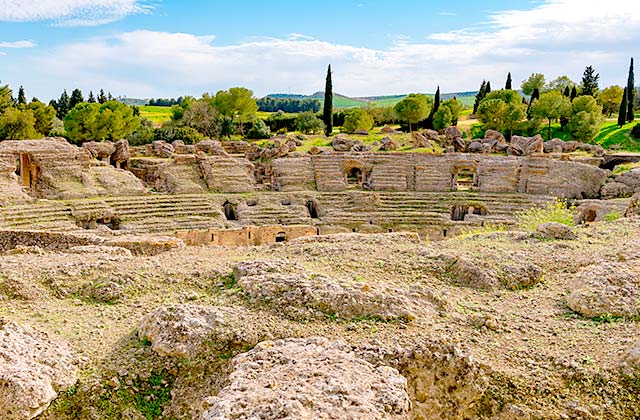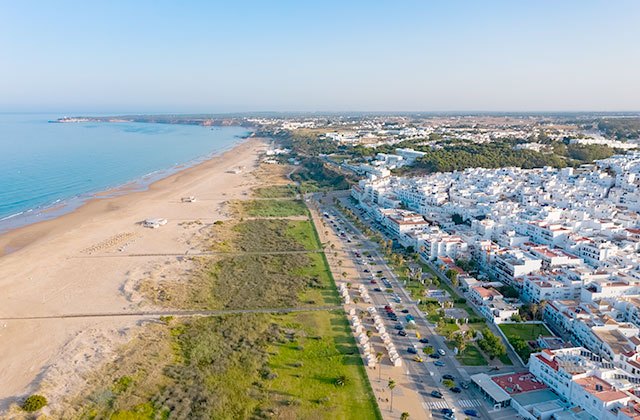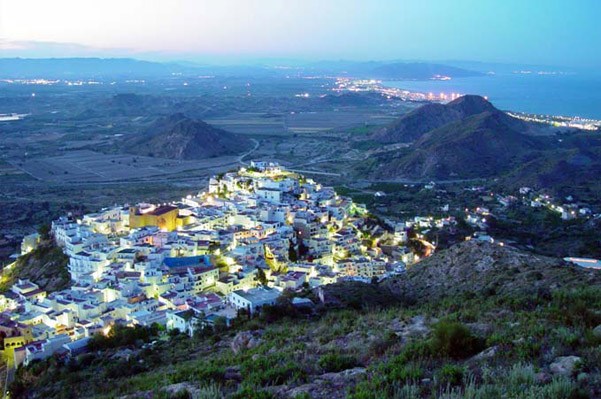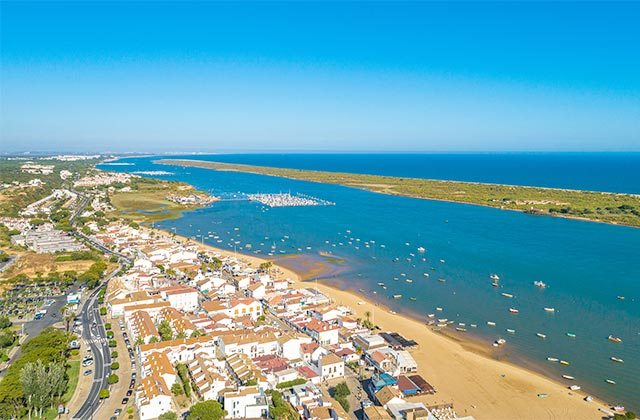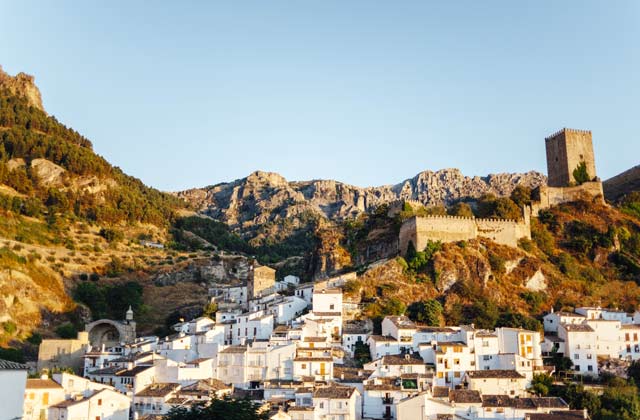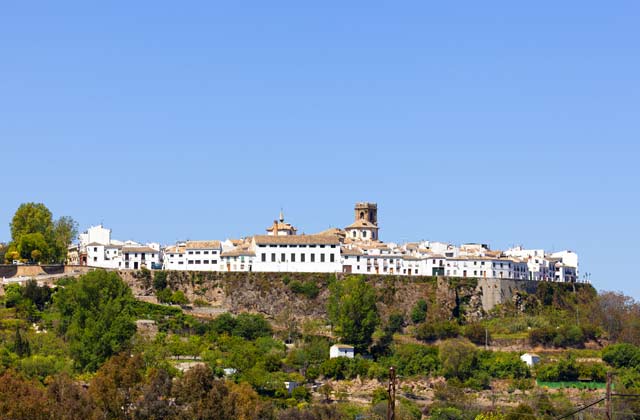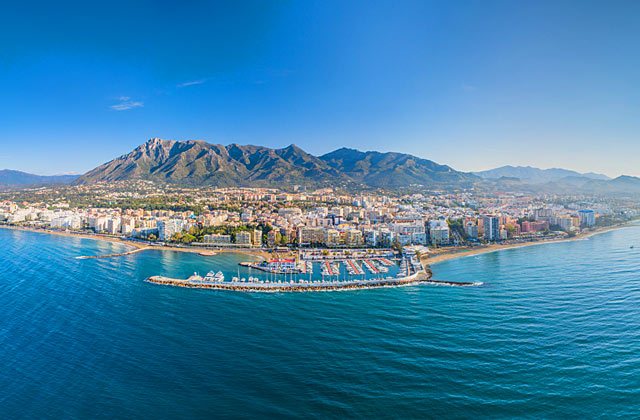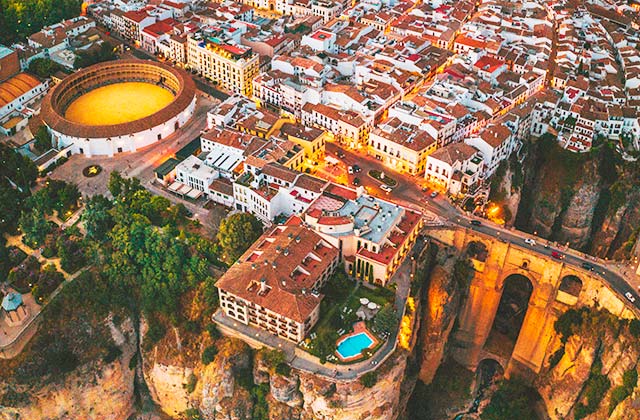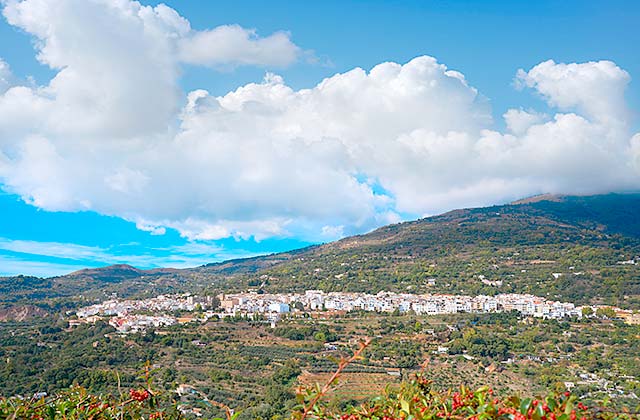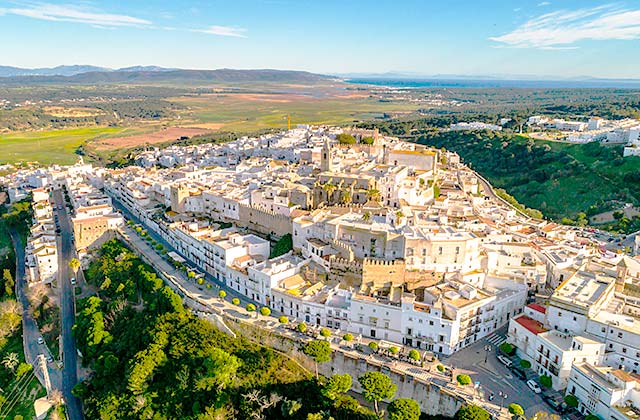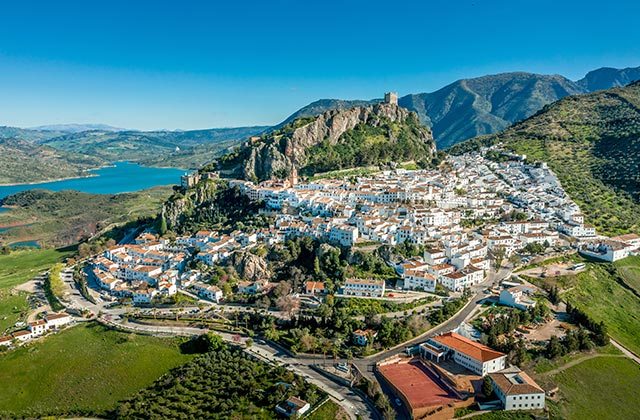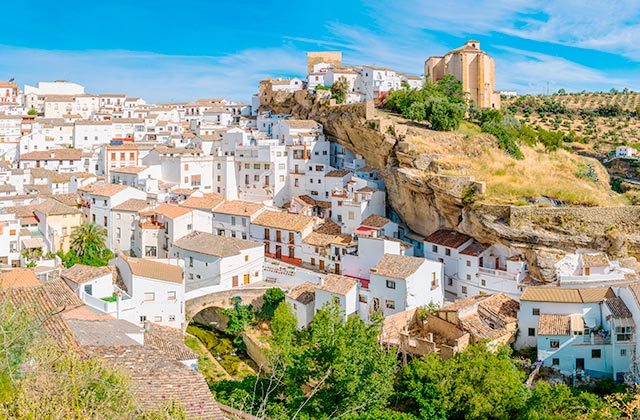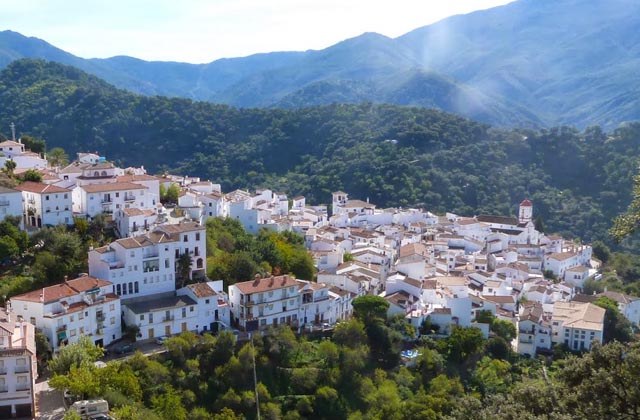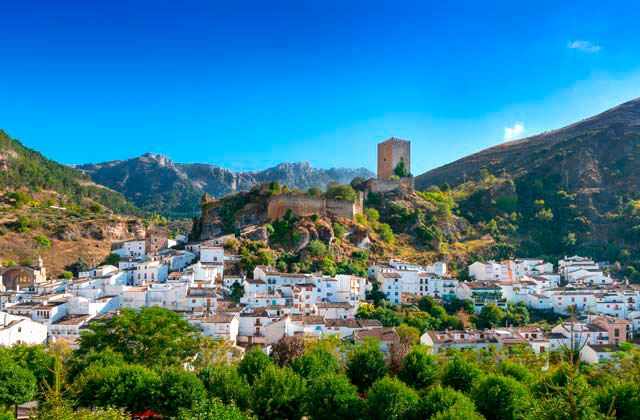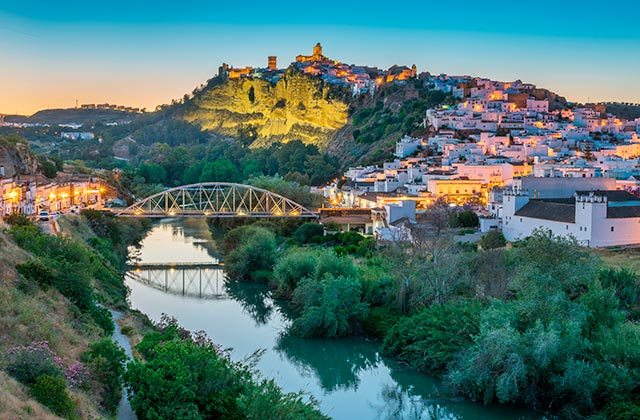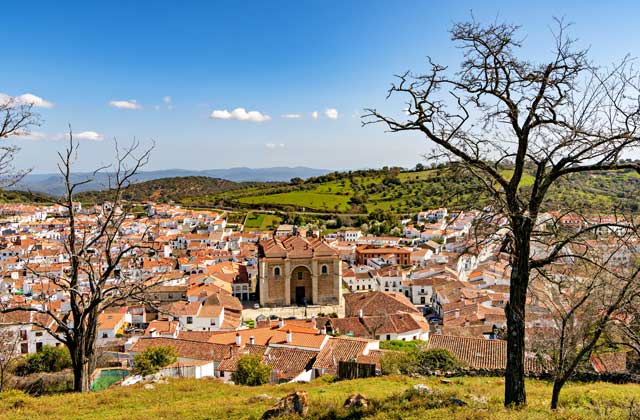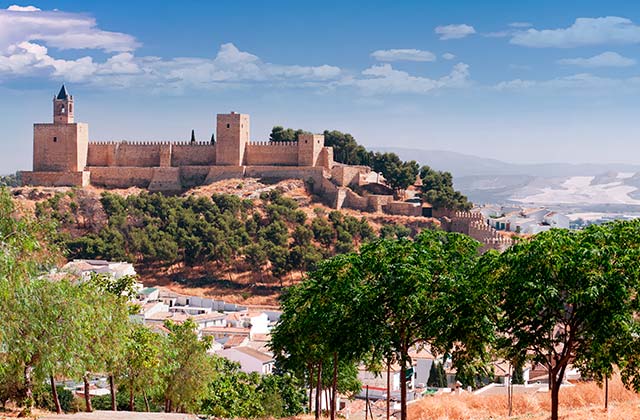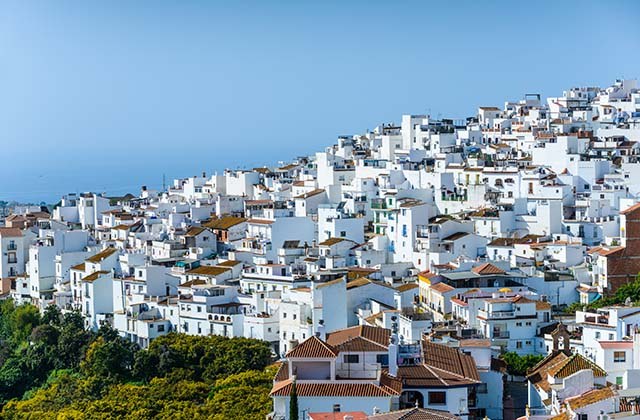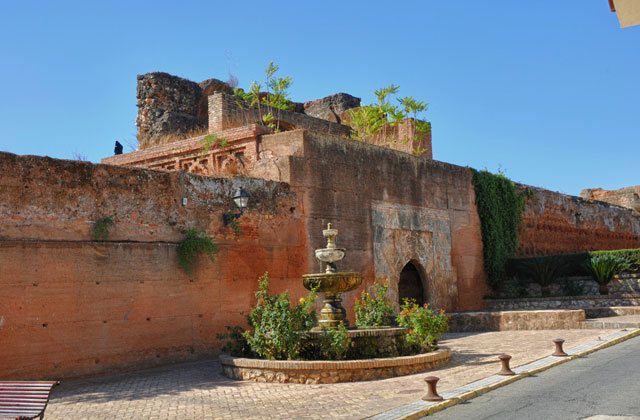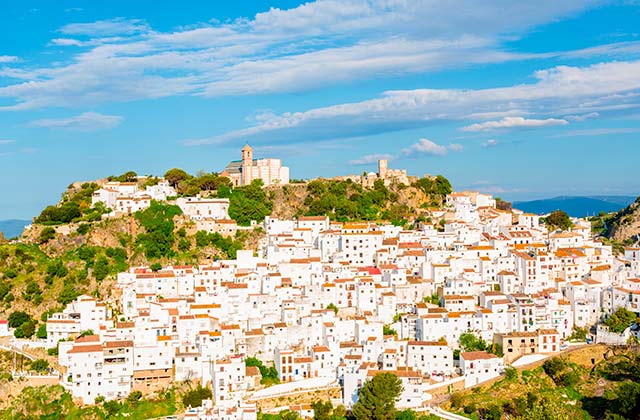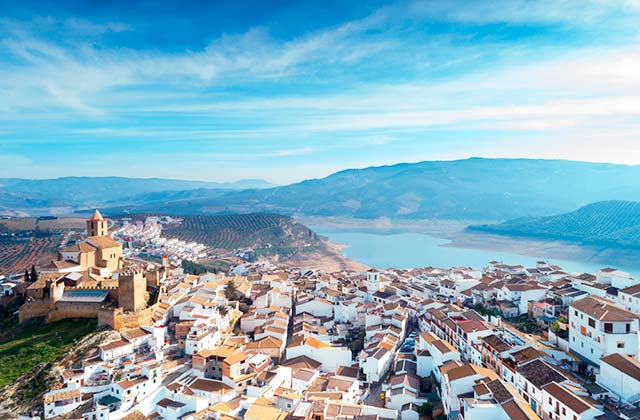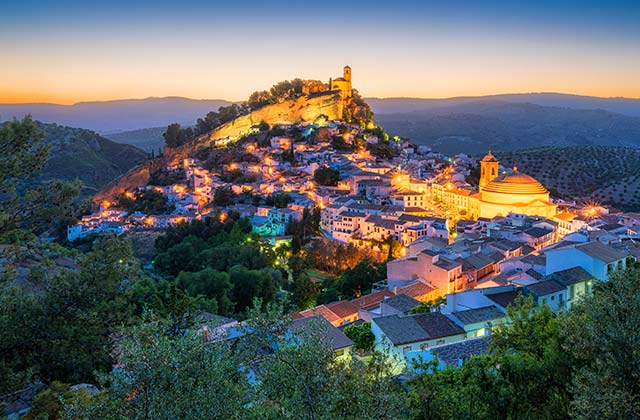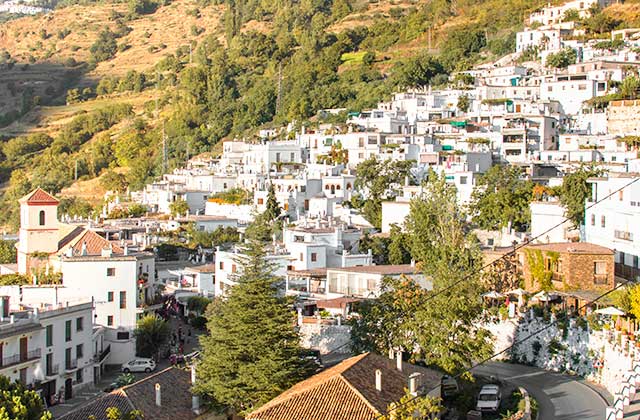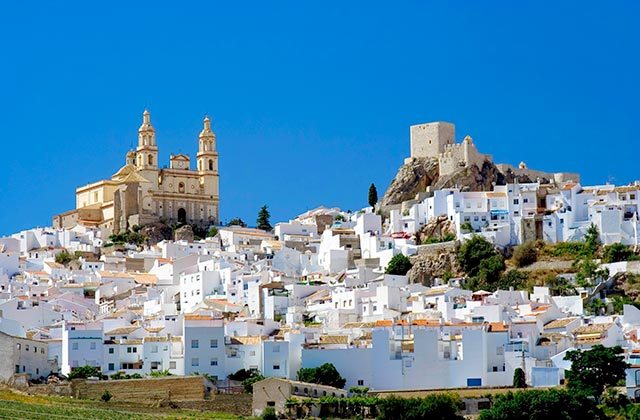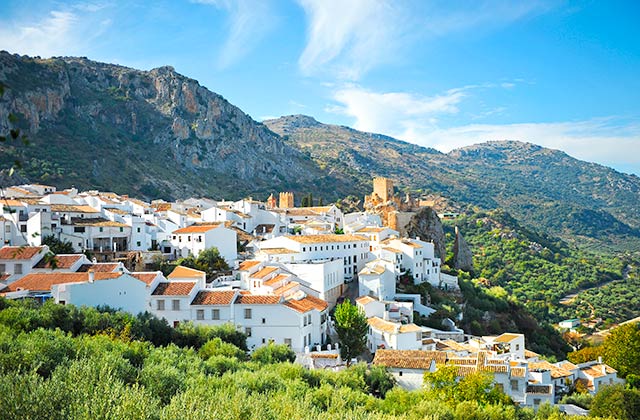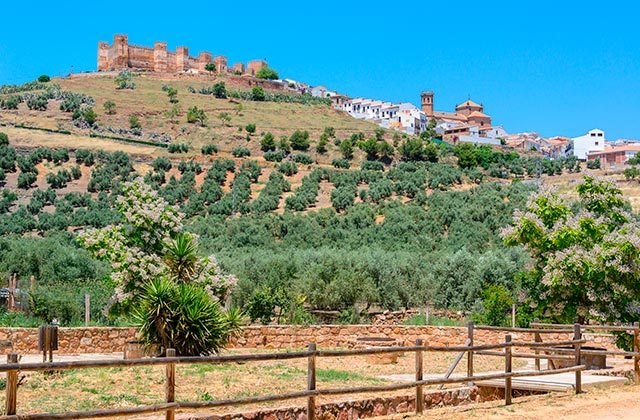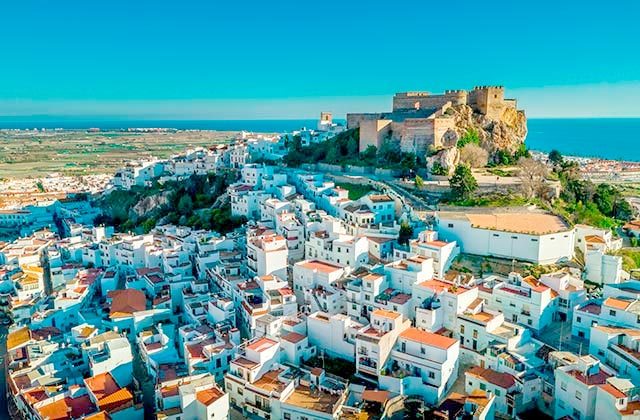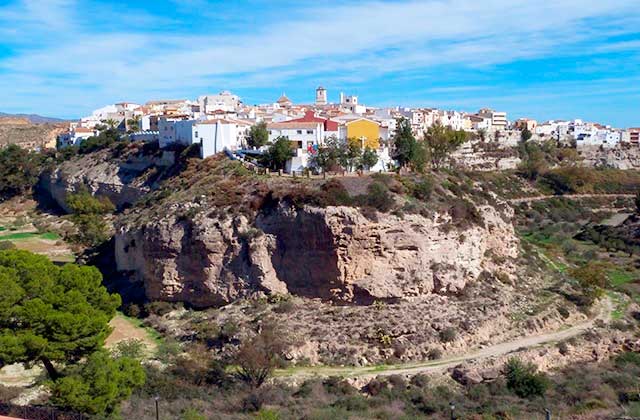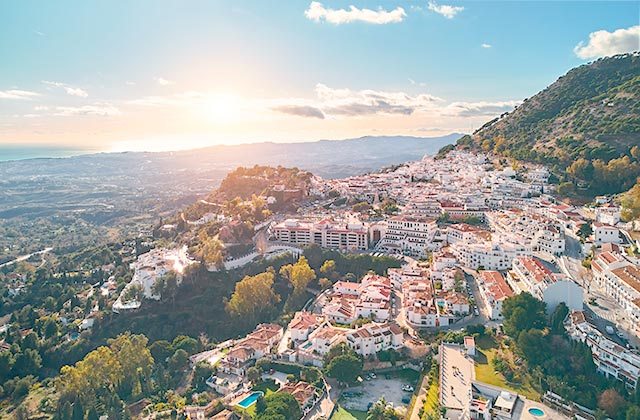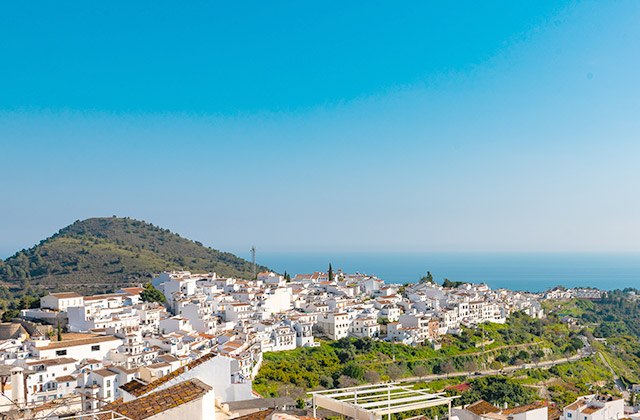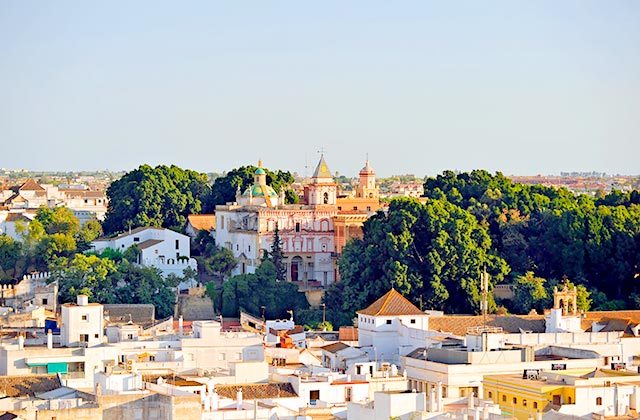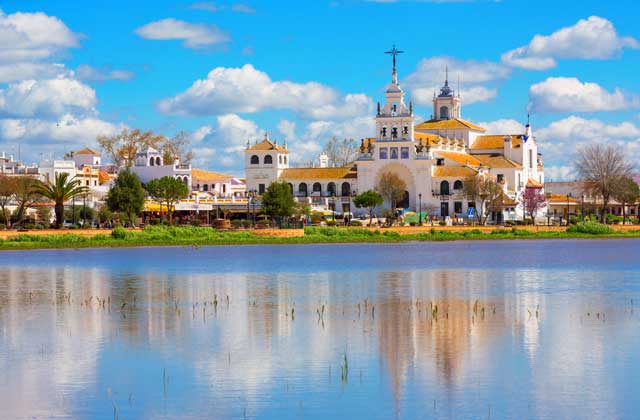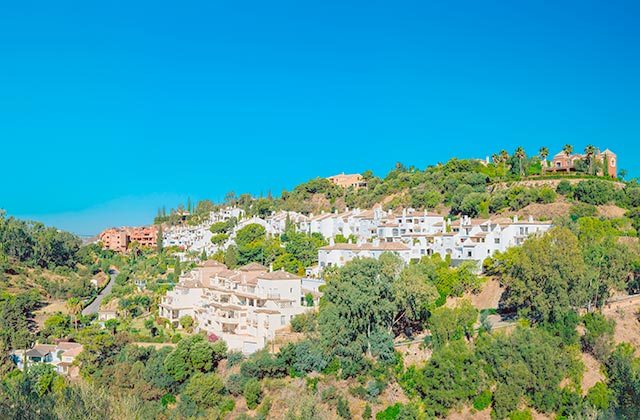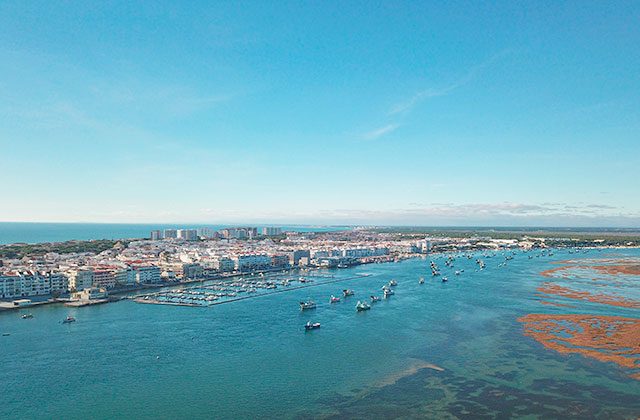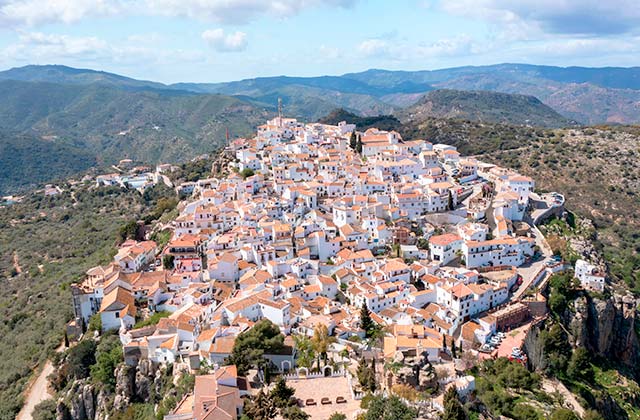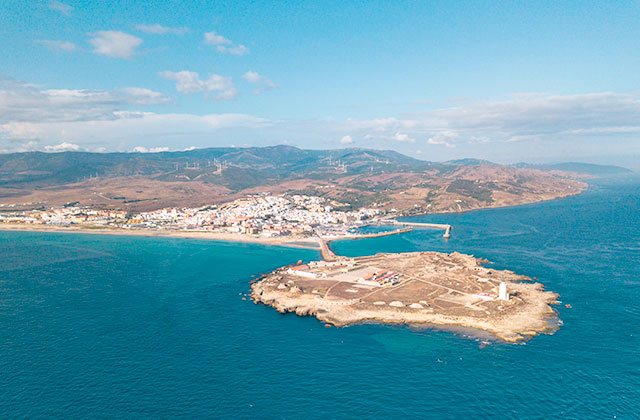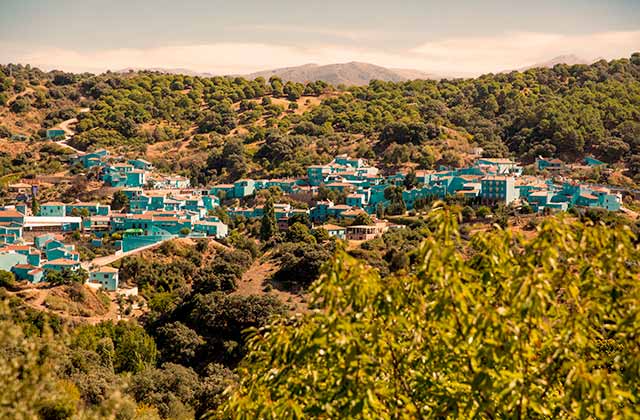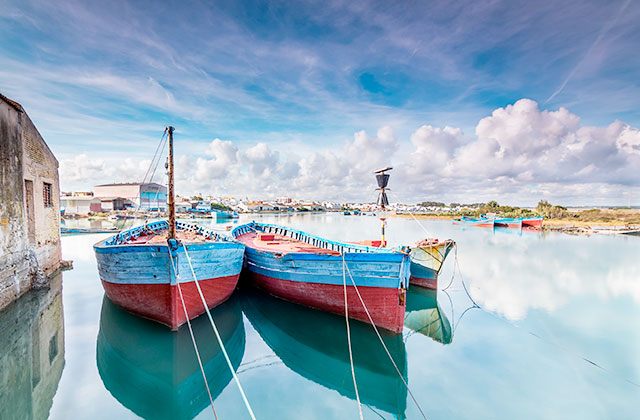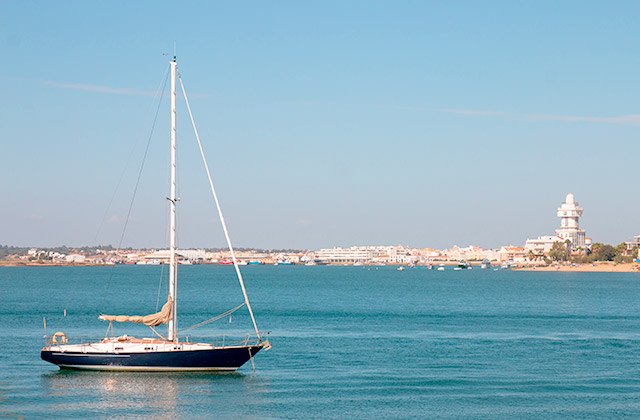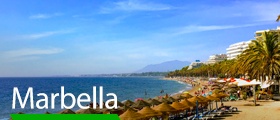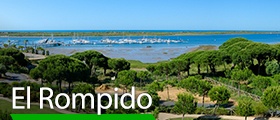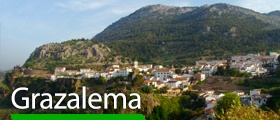
THE 40 MOST BEAUTIFUL VILLAGES IN ANDALUCIA
The list of charming villages in Andalucia gets longer and longer. There are more and more that are considered the most beautiful Andalucian villages, since these localities are increasingly committed to enhancing their historic, natural and cultural heritage. The attraction of these white villages does not always lie in their religious or civic monuments, though there are many that have beautiful ancient churches and Medieval castle remains, among other buildings of interest. The urban structure of these villages is usually the typical one of old Medieval town with narrow, winding streets, dotted with white houses.
There are beautiful villages the length and breadth of our country, but we have focused on talking about the villages of Andalucia and have only included 40, although southern Spain is home to many more, either on the coast or in the mountains.
1. NERJA AND FRIGILIANA, MÁLAGA
The eastern Costa del Sol is home to towns like Nerja, Torrox and Frigiliana. Its beaches can be enjoyed throughout the year thanks to a climate that is considered to be one of the best in Europe. Spectacular beaches, such as those found in the Maro Natural Park, combine with the typical charm of whitewashed houses and narrow streets of local villages, to make this place a paradise of sea and mountains.
2. SANTIPONCE, SEVILLA
Located just 7km outside of Sevilla, Santiponce is not to be missed. Built on the ruins of the Roman ancient city of Italica, this town was founded in the second century BC and was declared an archaeological site of interest by the Cultural and Historical Heritage Society, making it wonderful for lovers of history and culture. Its amphitheater and the Monastery of San Isidoro del Campo, were declared National Monuments in 1872.
3. CONIL DE LA FRONTERA, CÁDIZ
When following the White Villages of Cadiz route, the picturesque town of of Conil is the perfect stop for fried fish, seafood and sherry, all while enjoying the fabulous beaches known as El Palmar. Here, visitors are sure to applaud one of the most beautiful sunsets in Andalucia and a stunning example of a historical centre of typical maritime life.
4. MOJÁCAR, ALMERÍA
Another one of the prettiest villages in Spain is located on the coast of Almería: Mojacar. It’s famous mixture of white houses next to the Sierra de Cabrera, besides a maze of narrow streets, cause us the feeling of having travelled back in time. The blue flag signals access to its 17 miles of beach, offering yet another hallmark of quality and comfort of this Andalucian town.
5. EL ROMPIDO, HUELVA
The fishing village of El Rompido, Huelva, is located in the natural setting of La Flecha in the Costa de la Luz. Here lies one of the most precious jewels of Spain’s natural beauty, Nueva Umbria Beach, a strip of fine golden sand located between the Atlantic and the Piedra Rivers. An ideal place for lovers of pristine beaches and serenity even during the month of August.
6.ÚBEDA AND BAEZA, JAÉN
Travelling to Ubeda and Baeza in Jaén is like being transported back in time to a chivalrous era of the Renaissance. Declared a World Heritage Site by UNESCO, its monuments are of extraordinary beauty and together form a collection of magnificent, stately homes, churches and singular, charming squares, surrounded by three national parks. An ideal place from which to visit the Cazorla Natural Park.
7. PRIEGO DE CÓRDOBA
Along the Route of the Caliphate, Priego de Córdoba captivates visitors thanks to an extraordinary Baroque monuments and its prime location in the Subbéticas Natural Park. It is a charming village that highlights its typically Andalucian appearance and is surrounded by the ancient walls and towers. Another of the town’s strengths is its cuisine, made with their famous olive oil.
8. MARBELLA, MÁLAGA
On the Costa del Sol is Marbella, home to the most luxurious marina in Europe, Puerto Banus. Marbella is a paradise for beach lovers and glamour, but do not forget the old town and the famous Plaza de los Naranjos, accessible by narrow, white streets. This corner gives a glimpse of the tiny, typical Andalucian village it once was.
9. RONDA, MÁLAGA
Ronda is one of the most popular villages in Spain because of its spectacular valley and is located next to Grazalema, one of the most beautiful villages that make up the region’s White Village Route. This offers a chance to wander through its cobbled streets and enjoy whitewashed houses decorated with geraniums, near the Natural Park of Grazalema, which is designated a Biosphere Reserve by UNESCO.
10. LANJARÓN, GRANADA
Lanjarón is located in the only place in Spain chosen as candidate for one of the seven natural wonders of the world, the National Park of Sierra Nevada in Granada. The most characteristic feature of this town is definitely its water springs, which are fed by the snows of the Sierra Nevada, offering with medicinal properties discovered in the late eighteenth century. No tourist should miss its Mudejar-style spa.
11. VEJER DE LA FRONTERA, CÁDIZ
Vejer de la Frontera has been showing off for being one of the most beautiful villages in Spain. It was declared Historic Artistic Complex in 1976. Its historical centre is a beautiful network of steep and narrow streets. An ancient Arab castle crowns the walled enclosure of the old village.
Vejer de la Frontera also has one of the few virgin beaches that are preserved in Andalucia, Playa del Palmar.
12. ZAHARA DE LA SIERRA, CÁDIZ
Zahara de la Sierra is one of the Andalucian villages in the mountain range of Cadiz whose urban helmet is declared Artistic Historical Complex. Another Andalucian village crowned by an old castle; in this case, Nazari a castle of the 13th century. Its narrow and steep streets are dotted with white houses, occupying the skirts of the Jaral mountain range. You will also enjoy contemplating its surroundings, declared Natural Park.
If you want to experience one of its most emblematic festivals, visit Zahara de la Sierra on the day of the Corpus, a festivity of National Tourist Interest.
13. SETENIL DE LAS BODEGAS, CÁDIZ
Setenil de las Bodegas is another of the charming Andalucian villages in the highlands of Cádiz. One of the main attractions of this town is its hamlet built in the rocks, which is an example of a type of housing called “shelter under rocks”. The rocks make of roof or seat of the houses located at different levels.
In the highest part of the town is located the tower of the homage of an old castle.
14. GENALGUACIL, MÁLAGA
Genalguacil is one of the many beautiful villages of the Serrania de Ronda. The singularity of this Andalucian village lies in its original works of art distributed between the streets and squares of its urban centre. They are the result of the Art Encounters of the Genal Valley. An event held in the village since 1994.
Artists from different disciplines gather in the village to work and share ideas, during the first two weeks of August. The works they do in those days stay in the village, to be part of their heritage. There are also other cultural and leisure activities; musical performances, theatrical performances, parades, conferences and workshops.
15. CAZORLA, JAÉN
The charm and beauty of this Andalucian village is the result of nature and the men who have populated it over the years. It is a paradise for lovers of rural and active tourism. Its natural heritage is part of the Natural Park of Cazorla, Segura y Las Villas, in the province of Jaén.
You will be able to contemplate wonderful landscapes from the viewpoints located in strategic places of its urban helmet. The Castle of Yedra (or the Four Corners) crowns the village. The Palace of Chains is another of the outstanding monuments of Cazorla.
16. ARCOS DE LA FRONTERA, CÁDIZ
Arcos de la Frontera is a beautiful town in the province of Cádiz. One of the most attractive elements of this town are its spectacular views because it is settled on a large plateau. In addition all its streets are narrow with the traditional slopes so characteristic of Baroque, Renaissance, Muslim and Gothic art.
17. ARACENA, HUELVA
Aracena, besides being the capital, both of the mountains and of the natural park that bears its name, is one of the most beautiful villages in all of Huelva, not for nothing its historical centre is considered as cultural interest. If you decide to visit this town, you can delight with its 13th century castle, between whose walls is located the prioral church of Our Lady of Greater Pain, which still treasures today the sight of the mosque that was before the reconquest.
To mention Aracena is to speak of an indisputable protagonist, the ham, because this delicacy is the king of Huelva gastronomy, so visiting Aracena without tasting this delicacy is a mortal sin.
18. ANTEQUERA, MÁLAGA
Antequera is one of those charming little towns full of white houses and emblazoned palaces that show their importance. But also, Antequera hides between its narrow streets a beautiful citadel and a collegiate church, Santa María la Mayor, which is one of the maximum exposition of the Andalucian Renaissance.
But we must be honest and say that the maximum attraction of this city is not found in its streets, it is found in its megalithic monuments: the dolmen of Menga or Vieral, or in its natural monuments the Torcal de Antequera or Peña de Enamorados, something you cannot miss.
19. TORROX, MÁLAGA
The town of Torrox is considered the village with the best climate in all of Europe. But this town is much more than that; only here you can find monuments of an importance such as the Roman site of the Lighthouse or the church of Our Lady of the Incarnation. It is also 44 kilometres from Malaga and less than 10 km from Nerja and its famous cave.
20. NIEBLA, HUELVA
Niebla, is a town in the province of Huelva that is located on the banks of Tinto, and it is spectacular to see how it stands surrounded by reddish walls of Muslim origin. If you decide to visit this town, you can be sure that you will not be mistaken, because in addition to its white houses, picturesque streets and cosy squares, its historic centre has been declared of Cultural Interest, you can enjoy seeing the church of Santa María de la Granada, a spectacular construction described as a strange mudéjar work of the thirteenth century that rises on an old mosque. Simply beautiful.
21. Casares, Málaga
Located along a hillside, astride Campo de Gibraltar, the Serranía de Ronda and the Costa del Sol, and crowned by the ruins of a castle of Arab origin, we find this emblematic village, cradle of the father of the Andalucian people, Blas Infante. What is most striking at this locality is the fabulous panoramic view visitors can enjoy, since it is a delight for the senses to walk along its tortuous alleyways.
22. Iznájar, Córdoba
Nestled in the south of Córdoba province and surrounded by olive groves, opposite the reservoir of the same name, lies one of the most curious localities of Andalucia. The first thing that strikes you is its wonderful castle, though what is most worth visiting are its multiple viewpoints. And you cannot miss spaces as beautiful and picturesque as Plaza Rafael Alberti or the Patio de las Comedias.
23. Montefrío, Granada
Montefrío is located in the shade of a rock, and is home to both its Nazari castle and the church that the Catholic Monarchs built next to it. Special mention is given to the Peña de los Gitanos which, while 3 miles away, is worth visiting, since it is home to archaeological remains from the Neolithic Period to the Middle Ages.
24. Pampaneira, Granada
Pampaneira competes head to head with Bubión and Capileira, so we will not be the ones to say which is the most beautiful village of Alpujarras. What we can say is that this locality has preserved its original Berber structure and its tinaos and terraos are worth seeing. And thanks to its altitude, some of the most beautiful views of the entire province can be enjoyed from the Paseo de García Lorca.
25. Olvera, Cádiz
Located in the middle of the Sierra de Cádiz but facing the provinces of Seville and Málaga, this old Roman town is now one of the most attractive localities in the region. It’s easy to see why it is a historic artistic complex. Among the many things that are worth visiting here are the fortress of Nazari origin and the imposing Church of Our Lady of Incarnation.
26. Zuheros, Córdoba
Zuheros, while a small town with barely 900 inhabitants, is famous for being the entrance to the magnificent Cueva de los Murciélagos. It must also be said that this town boasts the title of being one of the best preserved of inland Andalucia. The most attractive aspect of this locality is its castle and the labyrinth of narrow, winding alleyways that suddenly amaze you by opening out onto squares full of life and charm.
27. Baños de la Encina, Jaén
This locality is one of the most picturesque of Jaén province. Its famous castle is one of the most interesting in Europe and an imposing construction from where you can see the Sierra Morena. Nor can you leave this town without seeing its old town or visiting the Jesús del Camino and Jesús el Llano Hermitages, and the San Mateo Church.
28. Salobreña, Granada
Salobreña is located in the middle of the Costa Tropical. Its narrow, winding streets ascend, flanked by white houses, from the shore of the Mediterranean Sea to its imposing castle. It is one of the main attractions in this part of Granada province.
29. Sorbas, Almería
Sorbas is very famous because it is home to Karts en Yesos de Sorbas, a beautiful complex of caves, geodes, canyons and other similar phenomena, which over the years has been excavating the River Aguas. In this locality, visitors can also enjoy viewpoints as spectacular as Santa Cecilia and Porche, from where they can enjoy the view of its over-hanging houses. As for its historic and architectural legacy, mention should be made of its Arabic Oven, which is the only one still active today and is used for cooking clay items).
30. Mijas, Málaga
Mijas, along with Marbella, is one of the jewels in the crown of the Costa del Sol. Its municipality is so extensive that it occupies part of the coast (Mijas Costa). It is in the sierra (Mijas Pueblo) where it is worth visiting, since here you can enjoy a fantastic view of the Mediterranean Sea and take a stroll along its alleyways of white houses and flowerpots on its facades. As a curious culmination to your visit to this town, we recommend you visit the “Carromato de Max,” a miniatures museum where works of art are made on canvases as particular as a lentil, a grain of rice or a pinhead.
31. FRIGILIANA, MÁLAGA
Malaga’s Axarquia area is known for its characteristic charm and its exquisite cuisine. Frigiliana is a clear example of white house villages that have retained their Muslim roots. Walking through its streets is like diving into the old souks of Al-Andalus. This town keeps a close bond with Granada de Boabdil and many of its hidden corners are reminiscent of it. It is commonplace to find facades hanging with baskets of geraniums, a typical Andalucian plant. Molasses is the flagship product of the area and it is home to the only factory house in Europe.
32. SANLÚCAR DE BARRAMEDA, CÁDIZ
Stately and aristocratic, Sanlucar de Barrameda was, at the time, one of the favorite summer destinations of the Andalucian elite. The sunsets in Bajo de Guia with Doñana on the background are unforgettable. Its numerous monuments reflect the important past that as crucial point of the overseas trade with the Americas the town had. Notable for example the Keep from where it is said that the Queen Isabel the Catholic first saw the sea.
Another major attraction of the town is its cuisine. Taste some Sanlucar prawns at Casa Bigote or the Balbino shrimp fritters is a must for the traveler. All washed down with manzanilla wines for which the town is famous.
33. EL ROCÍO – ALMONTE, HUELVA
This small village in the municipality of Almonte becomes the centre of one of the largest pilgrimages in the world once a year. Devotees from around the world flock by thousands to El Rocío during the days before Whit Monday. During the rest of the year, the town welcomes all visitors who want to experience this beautiful and unique enclave in the marshes of Doñana and the centre of a passion that transcends religious and becomes, year after year, a real social event.
34. BENAHAVÍS, MÁLAGA
Benahavís is one of the most picturesque localities in Málaga. We are talking about an incredibly beautiful mountain locality which is generally recognised as “the dining room of the coast” for the large number of restaurants located there. In addition to these, you will find big hotels and several golf courses. But make no mistake, Benahavís offers much more since the municipality also has several important monuments such as Montemayor Castle dating from the 10th century and the so-called Reina de la Torre or the Virgen del Rosario Parish Church.
35. PUNTA UMBRIA, HUELVA
Punta Umbría is a strip of land which enters the Atlantic and the Huelva Estuary, offering visitors and locals extensive and wide white sandy beaches. In this municipality it is obligatory to enjoy the La Bota, El Portil, Matanegra and Los Enebrales beaches.
This municipality was populated in ancient times first by Phoenicians and then by Greeks and Romans. The most striking aspect of this is located in “El Eucaliptal” which is home to interesting Roman archaeological remains from the 5th and 2nd centuries BC. However, the locality as it is today dates from the 19th century, when the English who arrived at the coasts of Huelva brought by to the Río Tinto mining company chose it as a hot springs for the quality of its beach and location near the capital. Today you can visit both the House Museum of the English and the Almenara Tower, a defence bastion located at the start of the estuary and next to the fishing village.
One of the biggest attractions are its ideal conditions to practice water sports, such as sailing or surfing.
36. COMARES, MÁLAGA
Comares rises over a hill from where the sierra and the adjacent mountains can be seen. It is the jewel in the crown of all La Axarquía. Like many other Malagan municipalities, its Arab origin is noted in many of its monuments you will be able to see, for example the Arabic Arches, the Aljibe de Maxmúllar, dating from the 14th century, and the street of the Muslim Arches. Nor should you miss the old wall of Comares Castle, the elegant Los Verdiales Square or the village’s three old fountains. Another very peculiar aspect of this municipality is that it forms part of the famous Raisin Route, dedicated to the Malagan raisin which is considered by experts to be the best in the world.
37. TARIFA, CÁDIZ
Tarifa is the wind. It’s surf. And is beach. In addition, Tarifa has the special charm that gives it being the city that is closest to the African continent.
Sailor airs mixed with Mozarabic and new ‘cool’ trends fill this town with intermingling and color that year after year has incorporated numerous alternatives for tourists to its leisure.
History mixed with the modernity of the kite surf boards that fill the sky of this coast in the summer with its comets.
38. JÚZCAR, MÁLAGA
The “smurf village” has earned its place in travel guides after “dyeing itself” blue. The inhabitants of this municipality of the Serranía de Ronda painted their houses this colour after being chosen to promote the film of the characters created by the artist Peyo. But Júzcar has more to offer: along with the 16th century Church of St. Catherine it is home to the outstandingly beautiful Genal chestnut grove.
39. BARBATE, CÁDIZ
Barbate breathes the winds of both the Atlantic and the Mediterranean, as this village is a classic fishing village, so common in the province of Cadiz. This village is found a stone’s throw away from the wonderful and famous beaches of Zahora, Caños de Meca, and Zahara de los Atunes, known as the best waters in Europe.
During your visit to this village, don’t miss the chance to enjoy local cuisine, hand in hand with tuna and a wide array of fishes, in addition to wonderful garden vegetables.
40. ISLA CRISTINA, HUELVA
Isla Cristina is a wonderful locality which has been able to weave its fishing tradition into the promotion of a tourist destination, which must be the envy other more famous villages on the Huelva Costa de la Luz. This small municipality near the border with Portugal is home to some treasures which make it a highly recommended place to visit whatever the time of year, although both spring and summer are of course the most recommended seasons.
At Isla Cristina we find the most important fishing port in all Andalusia, where you will you be able to see how salted and tinned fish is prepared, since it is home to the great tradition of these types of preparations. We recommend you also enjoy all its natural charm by visiting its gorgeous tidelands formed by beaches, pine forests and dunes.
WHERE TO STAY
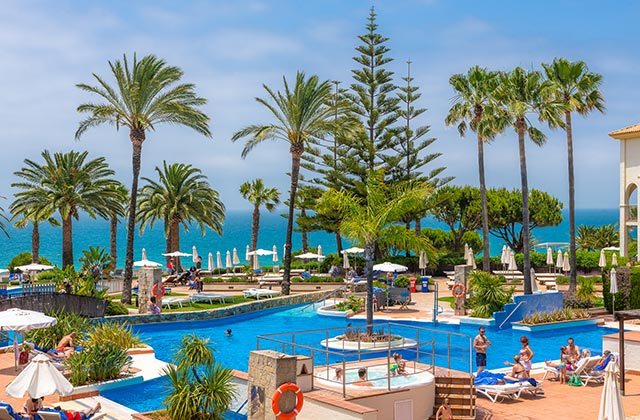
Hotel Fuerte Conil Resort
If you wish to discover this unusual side of Andalucía, don’t hesitate to stay at the best hotels. Without a doubt, the best option is Fuerte Hoteles. The chain has facilities where, apart from the regular services, you can enjoy the best of each spot in the Andalucian geography. Its over 60 years’ experience is the best warranty so you can devote your time to discovering these unusual corners. Marbella, Conil, Grazalema, El Rompido or Torrox are some of the places where you can find amazing accommodation facilities near the spots we have recommended for you.
